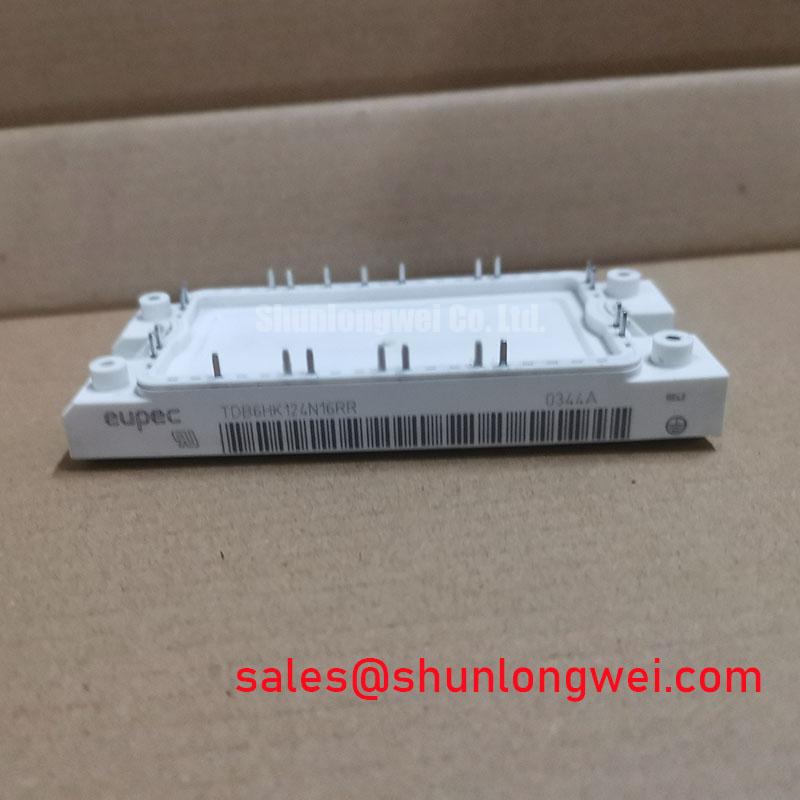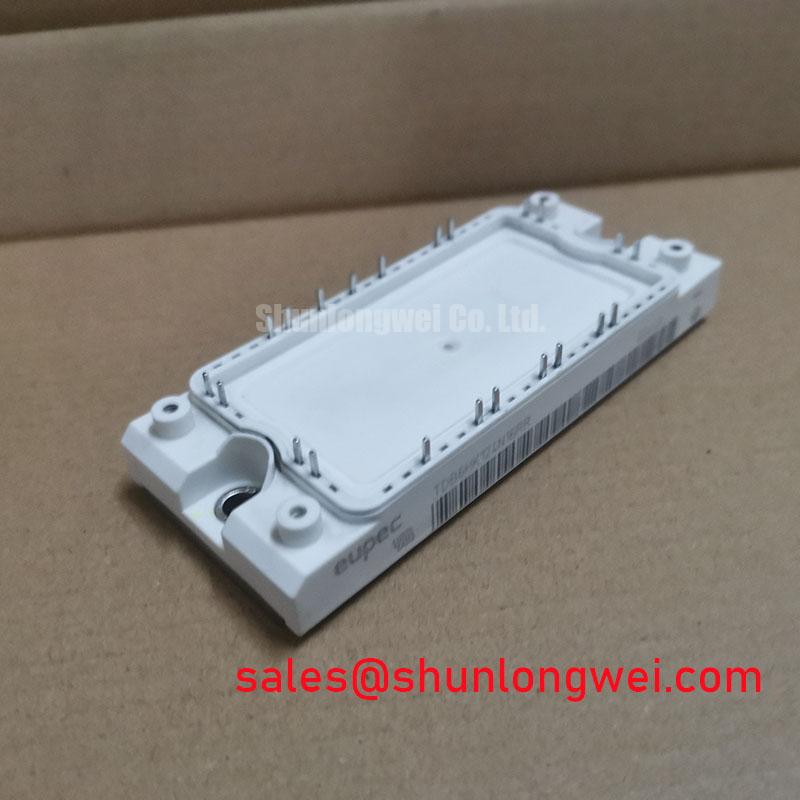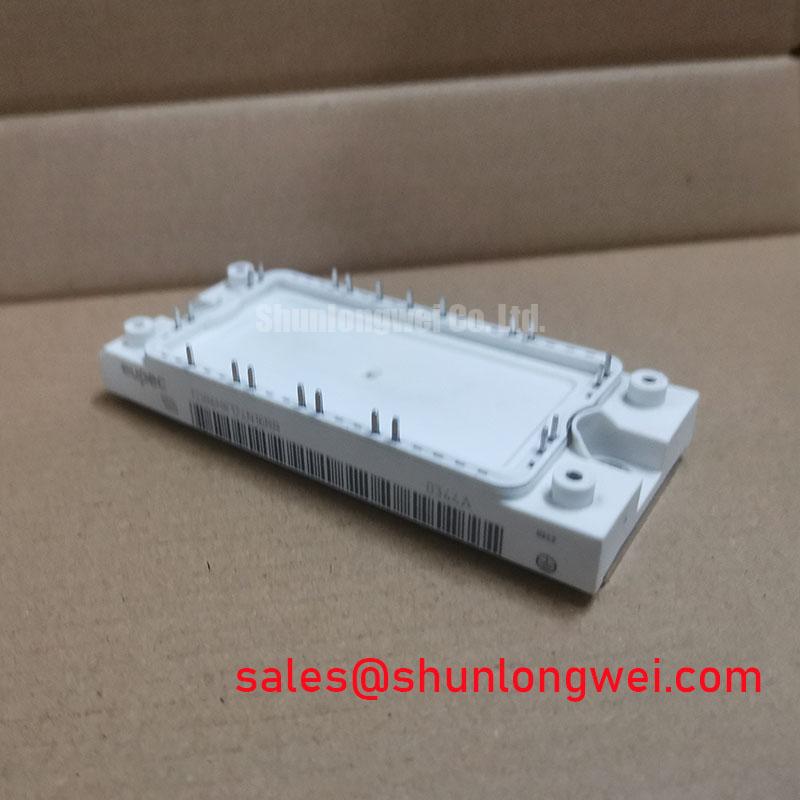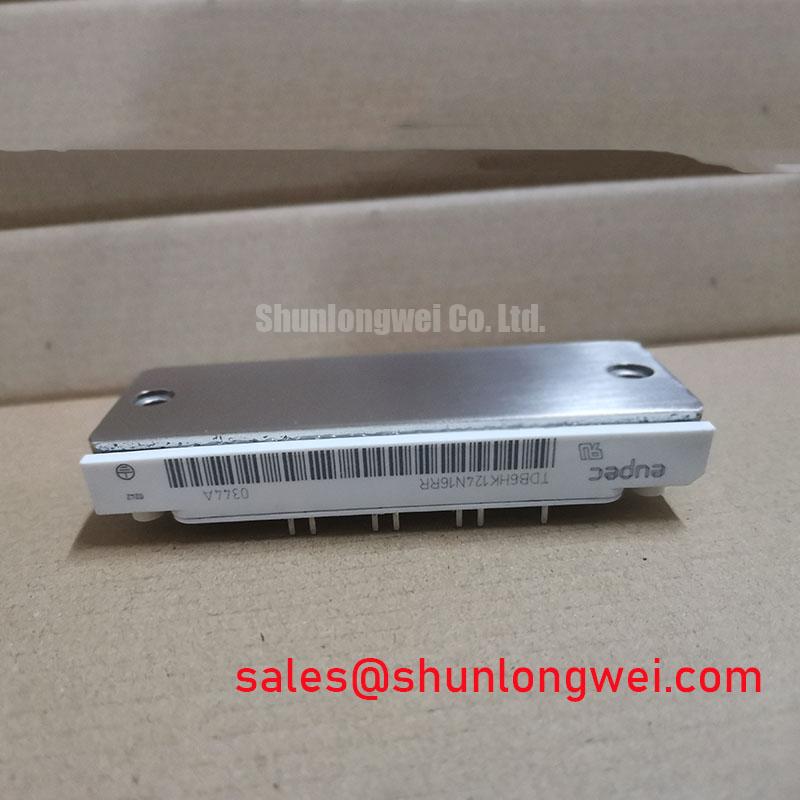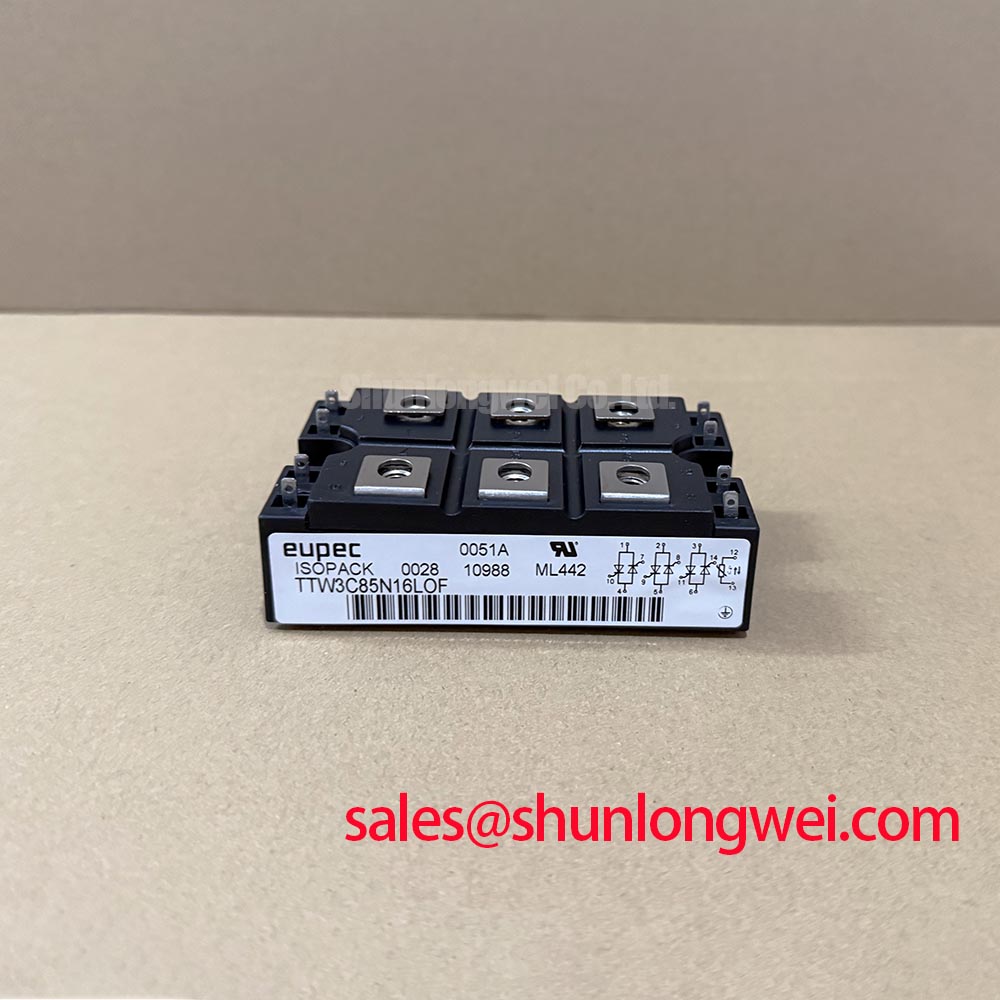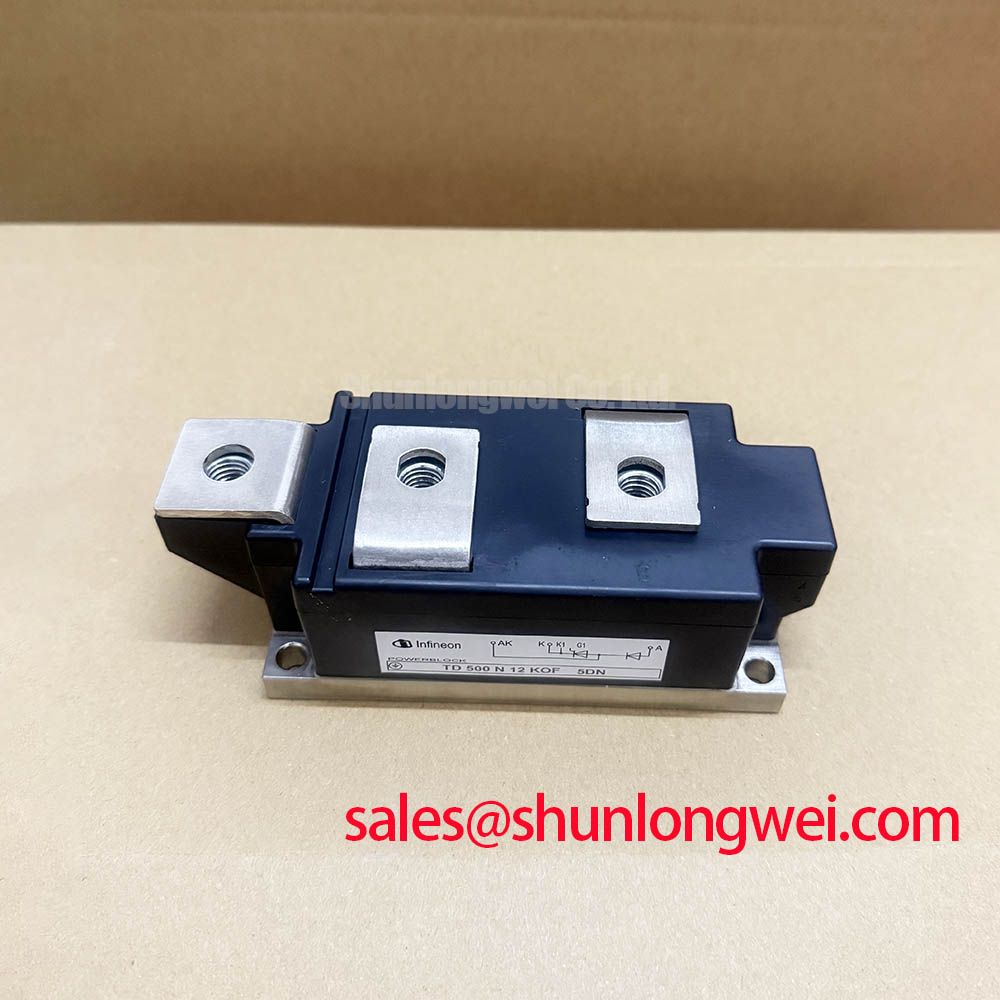Content last revised on November 14, 2025
TDB6HK124N16RR: High-Reliability 1600V Rectifier Module with Pressure Contact Technology for Industrial Drives
In high-power electronics, the specification sheet tells only half the story. While voltage and current ratings define a component's capacity, its internal construction dictates its lifespan and reliability. A common, yet often overlooked, point of failure in conventional power modules is solder fatigue. Repeated heating and cooling cycles cause microscopic cracks in solder joints, leading to increased thermal resistance and eventual failure. The Infineon TDB6HK124N16RR directly addresses this fundamental challenge. It is built not on conventional soldering but on Infineon's proven Pressure Contact Technology, creating a robust, solder-free interface between the silicon die and its housing. This engineering choice transforms the TDB6HK124N16RR from a simple AC-to-DC converter into a cornerstone of long-term operational reliability for demanding industrial systems.
Frequently Asked Questions for the TDB6HK124N16RR
- What is the primary engineering benefit of Pressure Contact Technology? Its main advantage is a dramatic improvement in power and thermal cycling capability. By eliminating solder, it mitigates the primary wear-out mechanism in high-cycle applications, leading to a significantly longer service life and higher system availability.
- Is the TDB6HK124N16RR suitable for use on a 690V AC industrial line? Yes. Its 1600V repetitive peak reverse voltage (V_RRM) rating provides a substantial safety margin for direct rectification of three-phase 690V AC lines, making it a versatile component for heavy industrial equipment operating on higher voltage grids.
- What is a B6 fully controlled rectifier topology? The "B6" designation refers to a three-phase, full-wave bridge rectifier circuit. In this module, the circuit is "fully controlled" because it uses six thyristors (SCRs) instead of diodes, allowing for precise control over the DC output voltage and enabling features like soft starting for motors.
- How does an integrated module simplify heatsink design versus discrete components? An integrated module like the TDB6HK124N16RR places all six power-generating thyristors onto a single, electrically isolated baseplate. This centralizes the heat source, requiring only one heatsink and one thermal interface. It simplifies mechanical assembly, reduces potential mounting errors, and makes thermal modeling more accurate and reliable compared to managing six separate discrete devices.
Comparative Analysis: Choosing Reliability Over Convention
When selecting a rectifier stage, engineers often face a choice between discrete components, standard soldered modules, and advanced solutions like the TDB6HK124N16RR. While discrete thyristors may offer a lower initial component cost, this is offset by increased assembly complexity, more extensive wiring, and a challenging thermal management design. Standard soldered modules improve integration, but remain susceptible to solder fatigue over long-term, high-cycle operation.
The TDB6HK124N16RR establishes a distinct category. Its primary advantage is superior long-term reliability, which directly translates to a lower total cost of ownership (TCO) in industrial machinery where downtime is costly. For systems that undergo thousands of start/stop cycles or significant load variations daily, the solder-free design is not a luxury but a strategic necessity. When pairing this rectifier with a robust inverter stage, such as one built around the FF400R12KE4, you create a power conversion front-end and inverter combination designed for maximum uptime.
Core Performance Indicators
The following parameters are central to the TDB6HK124N16RR's performance in demanding power conversion applications. For a complete specification, please Download the Datasheet.
| Parameter | Value |
|---|---|
| Repetitive Peak Reverse Voltage (V_RRM) | 1600 V |
| DC Output Current (I_d @ T_c = 100°C) | 124 A |
| Isolation Voltage (V_ISOL, RMS, 1 min) | 3600 V |
| Maximum Junction Temperature (T_vj max) | 125 °C |
| Surge Forward Current (I_FSM, 10 ms, 50 Hz) | 1550 A |
Deployment Profile: Proven in the Field
While specific customer data is confidential, modules based on this Pressure Contact Technology are integral to systems where performance is rigorously tested. In one deployment scenario, a manufacturer of heavy-duty soft starters for mining ventilation fans experienced a significant reduction in field failures after upgrading their rectifier stage to this technology. The frequent power-ups and load variations, which previously led to premature solder fatigue, were well within the operational capabilities of the solder-free module, enhancing the reputation of their final product.
Beyond Solder: The Mechanics of Pressure Contact Reliability
The engineering behind the TDB6HK124N16RR's durability is a departure from traditional module manufacturing. Instead of a rigid solder connection, this technology uses a precisely calibrated spring-loaded system to press the silicon thyristor die between molybdenum discs and a ceramic substrate. This approach is analogous to a suspension system in a vehicle. The molybdenum discs have a coefficient of thermal expansion (CTE) closely matched to that of silicon. As the module heats and cools, this entire "stack" expands and contracts together, minimizing mechanical stress on the die. The external pressure maintains a consistent, low-resistance electrical and thermal contact, effectively absorbing the "shocks" of thermal cycles that would degrade a soldered bond. This fundamental design choice is why the module excels in applications defined by cyclical stress, from motor drives to power supplies. To fully leverage this, understanding the principles of thermal resistance is key for optimal heatsink design.
Application Blueprints for High-Durability Systems
The robust construction of the TDB6HK124N16RR makes it the preferred front-end solution for a range of power systems where long-term, uninterrupted service is critical.
- Variable Frequency Drives (VFDs): Serves as the primary AC input and rectification stage, providing a controlled DC bus voltage for the inverter. Its reliability is paramount in VFDs used in continuous process manufacturing and logistics.
- Industrial Soft Starters: The module's ability to precisely phase-control the thyristors allows for smooth, controlled ramp-up of large induction motors, reducing mechanical shock and electrical inrush current.
- High-Power DC Supplies: For applications like electroplating, large-scale battery charging systems, and electrolysis, the module provides a reliable and controllable source of high-current DC power.
- Grid-Tied Converters: Used in certain renewable energy and battery storage systems as a durable and controllable interface to the AC grid.
Strategic Advantage Through Component Selection
In today's competitive landscape, the reliability of an industrial machine is a key differentiator. Specifying components like the Infineon TDB6HK124N16RR is a strategic decision that impacts more than just the bill of materials. It's an investment in brand reputation. By engineering out a common failure mode at the component level, system designers can extend warranty periods, reduce service calls, and build customer trust. As industries move towards predictive maintenance and longer equipment lifecycles, building upon a foundation of inherently reliable components becomes essential. Choosing solder-free, pressure-contact technology is a forward-looking approach that aligns with the goals of increased automation, higher uptime, and a lower total cost of ownership for the end user. This philosophy is central to the design of all modern power modules from leading manufacturers like Infineon.

